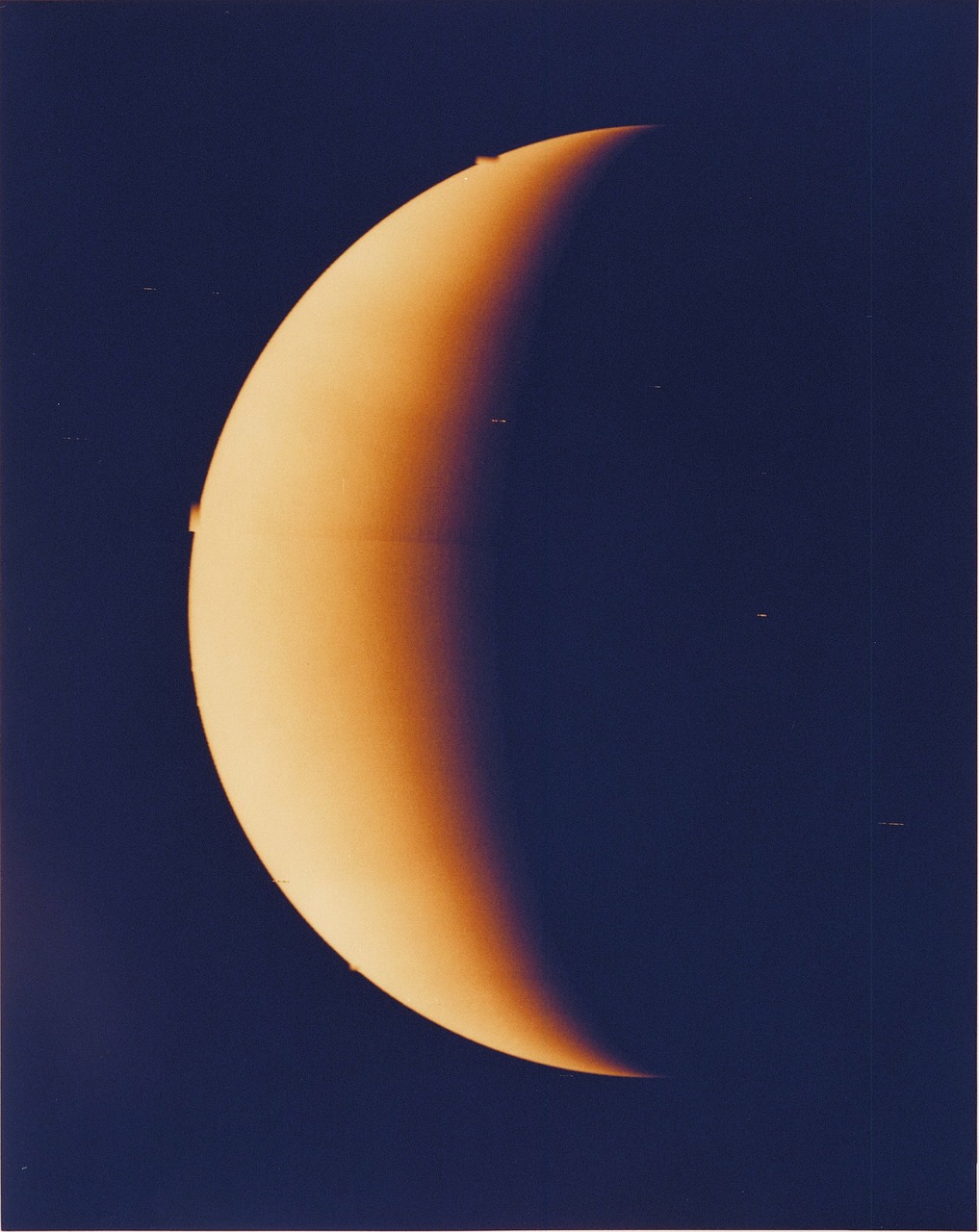Researchers have found the amino acid glycine in the atmosphere of Venus. Glycine is part of the genetic code.
Venus is often called the “hellish twin of the earth”. Size and mass are similar to our planet, but over 400 degrees Celsius, a poisonous atmosphere, active volcanoes and acid rain make it – at least for us – hostile to life.
Nevertheless, researchers believed to have discovered evidence of life in the form of hydrogen phosphide. Now other astronomers are following suit. They have discovered glycine on Venus, which is considered one of the building blocks of life.
Genetic code
The researchers used the Atacama Large Millimeter/Submillimeter Array ALMA for this purpose. Spectroscopy was used to measure a signal corresponding to glycine. The signal was strongest in the atmosphere near the equator. Nothing was found at the poles. The researchers have published the results in a study, which has not yet been tested and approved.
Glycine is the simplest form of the approximately 500 known amino acids. It belongs to the 20 amino acids that are part of the genetic code. The genetic code is basically the same for all known types of living beings.
However, glycine is not considered a biosignature, i.e. it is not a clear indication of life. However, it is one of the building blocks of life, or more precisely of proteins. Glycine was also one of the first organic molecules on earth.
Is life currently developing on Venus?
In their study, the researchers put forward the following hypothesis: The same biological processes that took place on Earth billions of years ago could now be taking place in the atmosphere of Venus. So life could be developing on Venus right now.
According to the researchers, the discovery of glycine could be directly related to the earlier discovery of hydrogen phosphide. Glycine was found at the same altitude in the atmosphere as the gas.
A further study seems to support the findings. According to this study, life can hardly develop on the surface of Venus, but it can develop in the haze of the atmosphere. This is at an altitude between 48 and 60 kilometers. There temperatures of -1 to 93 degrees Celsius are possible. According to researchers, Earth-like microbes could reproduce there.
Not all convinced
The theory of life on Venus, or life that arises there, is doubted by many scientists. Thus, although hydrogen phosphide is considered a biosignature, it can also be produced chemically. However, this requires high energy input. Venus lacks this energy, but it is available on Jupiter and Saturn, where hydrogen phosphide was also found. However, some researchers have put forward the theory that the active volcanoes of Venus are responsible for the formation of hydrogen phosphide, rather than biological processes.
The astronomers who discovered glycine are also cautious. They emphasize that it is only a building block for life, but not proof of life. Glycine could also be produced chemically, possibly by processes that do not exist naturally on Earth, but do exist on Venus.
It could also turn out to be a measurement error in the discovery. In spectroscopy, the signal of glycine is very similar to that of sulfur oxides. The researchers therefore also say that it is necessary to send a rum ship to Venus. A probe would have to take samples to confirm the discovery of glycine.
Glycine has not been found on any other planet except Earth and in comets.
— Hector Pascua, Source: futurezone.at. Picture: stockilyapp.com
This post has already been read 1700 times!



